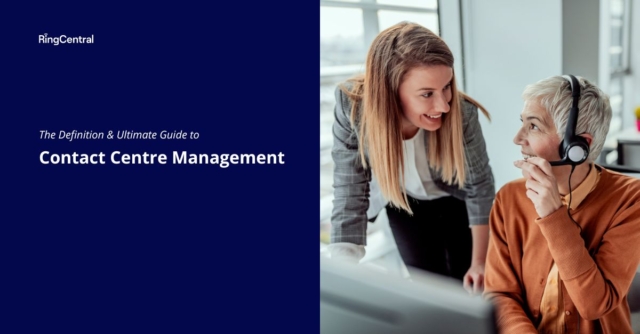What is Contact Centre Management? 7 Best Practices for Ultimate Efficiency
Today’s customers expect a particularly high standard of customer service from businesses. Nowadays – with a range of communication channels to choose from – a contact centre is often the best way to provide it. These facilities offer many advantages over older customer service departments, allowing you to provide better customer service than ever before.
It’s easy to misunderstand what a contact centre is capable of. That’s why we’ve put together this new guide to the concept of contact centre management. It’ll explain the basics of a contact centre, its benefits, and its numerous capabilities. It’ll also share the best metrics to measure success, and how your managers can offer a positive employee experience during the workday.
What is a contact centre?
A contact centre is a place (eg an office or business department) where you manage all of your different customer interactions. If you take an omnichannel approach, (eg email, live chat and social media) you’ll probably handle all of them from this location. This can help you streamline your customer service activities.
Contact centres are used in a variety of industries including retail, finance, and healthcare. Older contact centres may have also carried out telemarketing and marketing research, although nowadays these usually have their own departments.
Since you’ll be handling a variety of different communication channels, you’ll be addressing a range of different communication purposes as well. For example, you might offer customer service, technical support, or even sales assistance from your contact centre.
Agents within a contact centre will have access to some (if not all) of your service channels at once. They can also use several tools like automatic call distributor systems, real-time reports, and scripts. These allow you to handle greater call volumes, analyse job performance, and improve it along the way.
Today, a contact centre can be a virtual rather than physical entity, too. No longer do agents have to work in the same geographical location. With cloud-based contact centre software, they can serve customers from anywhere.
If you haven’t already explored the idea of a contact centre, now is a great time to do so. This is because customers have more ways than ever to communicate with businesses. As a result, they expect regular access to any business, which offering multiple channels facilitates.

However, contact centres don’t just benefit customers. Businesses can use them to improve their customer service offering, better understand their customers, and bolster the overall customer experience. This in turn will help your business do better in the long run.
Contact centre vs call centre
Although a contact centre and a call centre have some overlap in functionality (and technology: both may use an automatic call distributor, or ACD, for instance) they work differently in practice.
Both provide customer service to people who buy from you, but a call centre is focussed on inbound and outbound phone calls. In contrast, a contact centre can handle many different communication channels at once (including digital channels) and engage in things like email marketing, too.
Moreover, a call centre often takes on a slightly different mix of business tasks (and, as such, call centre software can look a little different). While customer service is typically a focus, call centres can also be used for things like information gathering and payment collection. As such, it’s important not to mix up these terms when considering your business activities.
Benefits of a contact centre
A contact centre comes with several different advantages that help your business work more effectively:
1. Time and cost efficient
The most obvious benefit of a contact centre is the amount of time and money it saves your business. However, it does so in a way you may not have anticipated.
Today’s customer service chatbots—one channel that can get built into a contact centre—can handle a broad range of common customer queries for a business. This equips today’s customers to solve simple problems themselves, reducing the time taken to answer a query. This self-service allows agents to improve their own service level, and lower a business’ overall costs.
However, it’s important to understand that chatbots aren’t a silver bullet. Even if the technology is improving, it remains in its infancy, and chatbots still can’t handle anything too complex. Good businesses will use chatbots and customer self-service in tandem with one another.
2. Optimise customer information
Businesses work better when they (within reason) know more about their customers. Contact centres can make this learning process easier, as customers reaching out via contact centres share information about their behaviour and preferences. A business can use this information to improve the customer experience, and offer a smoother customer journey.

Contact centres can also use data from customer relationship management (CRM) software. By putting this to work in a contact centre, you can collect larger quantities of customer data and analyse it more effectively than before.
3. Improves usage of interactive voice response (IVR)
Interactive voice response systems have long been used amidst contact centre technology. They use a system of pre-recorded messages (and keypad selection or voice recognition) to guide customers to the right business department. However, this kind of automation can prove a source of frustration if instructions are unclear or voice recognition is poor.
Contact centres can help IVR systems work more effectively. They do this by designing them to predict the intent of people calling. In other scenarios, they can solve problems without the need of an agent—similar to other forms of automation, like chatbots.
What is contact centre management?
Contact centre management is the practice of overseeing broader contact centre operations. A senior manager may be responsible for hiring and onboarding new employees, engaging with them regularly, and giving feedback where appropriate.
Of course, you don’t have to do everything yourself: Sometimes you must delegate responsibilities to other employees, and equip them with the tools to do things themselves.
You’ll also have to handle most major decisions within the centre, as well as many administrative tasks. These include organising timesheets, arranging training sessions, and planning projects. Motivation is another concern of senior managers, particularly with regards to remote team motivation.
Like call centre management, contact centre management isn’t for the faint of heart. It requires a detailed understanding of your particular business, and the ability to work within strict budgets. You’ll also need to set a good example to employees, as they will look to you for guidance on how to work effectively.
4 Leading contact centre expenditures
1. Handling time
This refers to how long your agents take to handle a customer query. It includes both the time spent on the conversation itself, and how long it takes to wrap up the call.
The more time you spend on customer queries, the more staff you must hire to deal with them. As you might expect, paying employees is the biggest expense a contact or call centre must deal with. Therefore, it’s in your best interests (if you can) to reduce the time spent on each customer query.
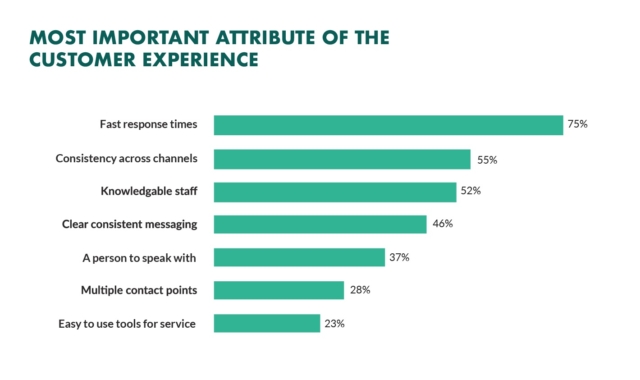
You can do this in a few different ways. You might want to reduce the time it takes to pick up a call in the first place, or monitor the calls of agents to spot any common issues. These can, in turn, be mitigated by training your agents to resolve them.
Of course, the problem may not be with your agents at all. Try examining your wider business processes; there may be something you can do to reduce queries in a particular area.
2. Human resources
This refers to having the right numbers of staff in your business. If you have too few staff in a contact centre you can reduce operating costs, but your customer service—the centre’s raison d’etre—will be compromised. Conversely, having too many staff means customer satisfaction may plateau.
Take a look at your customer demand and use this to determine the right staffing levels for your contact centre. You may also want to train your staff to handle a wider range of enquiries.
3. Telecommunications
Although paying your staff is the biggest expense in a contact centre, the technology you use should also be considered. Toll-free phone services, IVR systems, and other technology customers interact with all incur a cost on your end. If you don’t have enough staff on hand to address customer queries in a timely manner, customers must make do with other technologies. In the long run, this can prove expensive for you and frustrating for them.
In addition to, as we’ve discussed, getting staffing levels right, you need to look at who’s calling you in the first place. Work to spot any fraudulent phone activity, and consider blocking it—especially if it comes from a pay phone.
4. Volume of contacts
This refers to how many outbound and inbound contacts all of your communication channels are seeing. The higher the number of contacts, the higher your operating costs. Therefore, it’s worth thinking about the ways in which people get in touch with you, which can necessitate things like a custom mobile phone number.
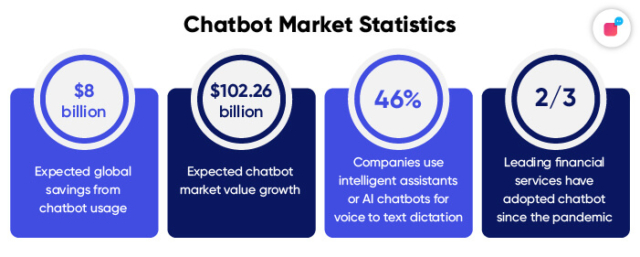
While you don’t necessarily want to close off a specific communication channel, you may want to encourage customers towards one channel if another is proving too expensive. You may also want to modify an existing one (like a chatbot or IVR system) to address a common problem you’ve uncovered. This is an effective way of improving customer satisfaction and helping agents use their time better.
Types of contact centre
Today’s contact centres come in a few different shapes, even if the services they offer don’t necessarily change as a consequence.
1. Hardware-based
This refers to an on-premises contact centre with physical hardware in a single location. While these used to be the most familiar type (and offer the benefits of in-person working), they naturally require a lot of physical space. The hardware itself may also require updating, and you must have disaster recovery procedures in place to handle any worst-case scenarios.
2. Cloud-based
A cloud contact centre handles inbound and outbound communications via remote servers. Agents using these centres can access them from anywhere online, although their capabilities are often identical to hardware contact centres.
3. Hosted
This is when a business outsources their contact centre infrastructure to another company. This other company handles all the technical aspects of running your contact centre. Its key benefits are lower operating and maintenance costs over time.
4. Virtual
In these contact centres, your entire contact centre workforce works remotely. This is another great way to lower costs, and can make the job more appealing to agents. It’s definitely worth considering in an age where remote working is increasingly popular.
Contact centre channels
Customers can reach today’s businesses in more ways than ever before. Below are the different channels your contact centre should be equipped to handle:
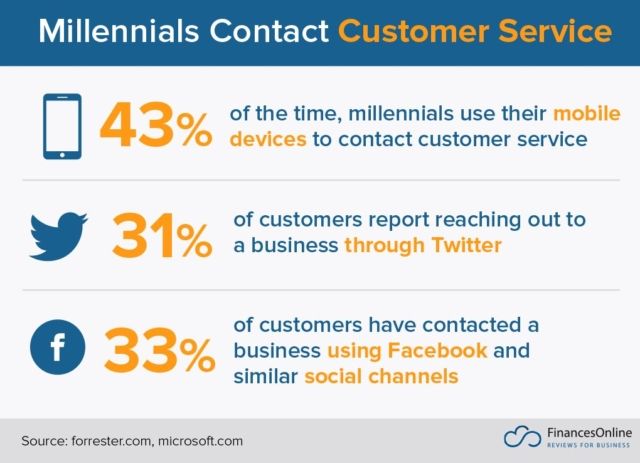
1. Phone
This is the most obvious one, given the (limited) overlap between contact centres and call centres. While callers do like to solve their own problems nowadays, many of them still prefer to speak directly to a human being.
Phone conversations are usually the best way to resolve a more complex query or issue. When paired with a robust IVR system, they’re a solid way for businesses to provide good quality service.
2. Webchat
Webchat works in a similar way to the phone, in the sense you’re talking to a human being. However, each participant communicates by typing instead of talking.
Webchat may be used in conjunction with a chatbot, which gathers key information before a human agent becomes involved. Chatbots can even solve simpler problems for customers; this kind of self-service is often very popular.
Webchat is a great option for customers who feel anxious about speaking to a contact centre agent within your business. It also helps you sidestep issues with things like call quality that can make communication needlessly difficult.
3. Text message (SMS)
Just because a new technology has come along, that doesn’t mean an old one is worthless. Communicating over text message is still a viable option for businesses, as well as the customers that buy from them.
In terms of the user experience, SMS isn’t radically different to talking on a webchat platform. It may also be more successful than other communication methods. While we tend to open emails within 90 minutes of delivery, we open text messages within 90 seconds, instead.
As such, SMS is a great option if you or a customer needs a problem resolving quickly.
4. Social media
Social media’s prominent place in our online lives makes it a key tool in your customer service offerings. Many people using social media also look to brands on the same channel for customer support. Conversely, a bad customer experience here will reduce customer engagement.
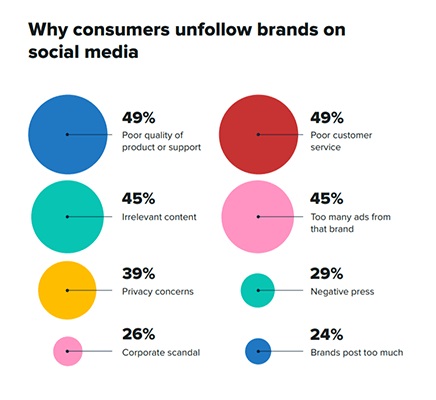
Social media can be used to handle many different customer interactions. It’s suitable for offering support before, during, and after a purchase, as well as answering questions or issuing refunds. However, for it to work properly you need to respond to queries promptly, and think carefully about which queries you respond to in the first place.
5. Email
Even if it’s less immediately responsive than other methods of communication, email still has a place in today’s contact centres. It allows you to take a little more time with your communication, and maintain a personal touch in how your business communicates.
It’s highly likely that everyone in your contact centre will understand how emails work. That said, there are still some best practices to consider here. Try to avoid using too much jargon or mechanical sentence construction, and focus on presenting a solution first and foremost.
Other best practices are more subtle. Rather than using imperative statements (“do this”) ask questions (“can you do this?) when dealing with queries. Moreover, make sure to be clear about when you’ll get back to someone; give yourself a clear timeframe to respond within.
Don’t be afraid to send a follow-up email later on—unless you’ve been explicitly asked not to, of course. This is another great way to add a personal touch to communication.
6. Video
Video customer support can be one of the quickest ways to solve a customer’s issue. While you can obviously create a set of how-to videos to solve certain problems, you can also speak to customers face to face via a video chat platform.
This offers a highly personalised and intuitive level of support if you’re prepared to offer it—and there’s plenty of different video chat options nowadays.
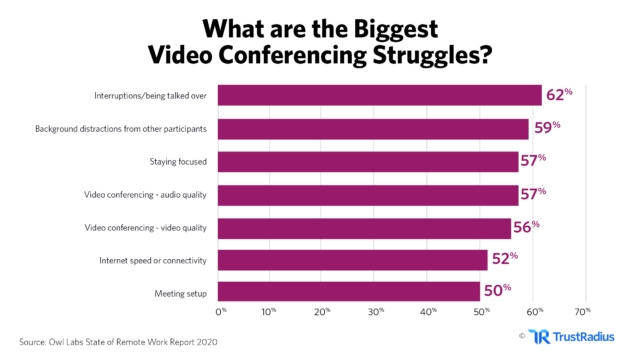
Video conversations (and other tools within them, like screen sharing) are ideal for bypassing common communication issues. But even if you’re unable to perfectly solve an issue—within or without a video call—this format can help you sustain the customer-business relationship, through some kind of personal message or special offer.
Examples of contact centre KPIs and metrics
While looking at best practices for customer service is useful, you’ll still want to measure your efforts in some way. Fortunately, there are several different metrics and key performance indicators (KPIs) you can use in this context:
1. Customer service satisfaction (CSAT)
This refers, simply, to how happy customers are with the service you’ve provided to them. We can establish satisfaction levels during key events: Examples include customer service exchanges, the moment of purchase, or your onboarding process.
The easiest way to measure satisfaction with customer services is with some kind of survey. These contain questions on how customers felt about the service you provided. You may wish to provide some follow-up questions depending on your specific needs.
Surveys can be delivered in a few different ways. If customers interact with you through an app or website, you can add a feedback section in a prominent position on it. Alternatively, you can send out a survey immediately once a service is delivered or through an email. Keep in mind the latter usually has a low response rate, though.
It’s a good idea to limit the number of questions within these surveys, particularly if it’s accessed via your app or website. This helps to boost the number of customers engaging with it, especially as they’re seeing the survey while their interaction with you is fresh in their mind.
2. First contact resolution (FCR)
This metric refers to how often your agents resolve a problem when a customer first presents them with it. It’s distinct from first call resolution, which only refers to conversations over voice channels. In contrast, first contact resolution covers all the channels a contact centre may handle.
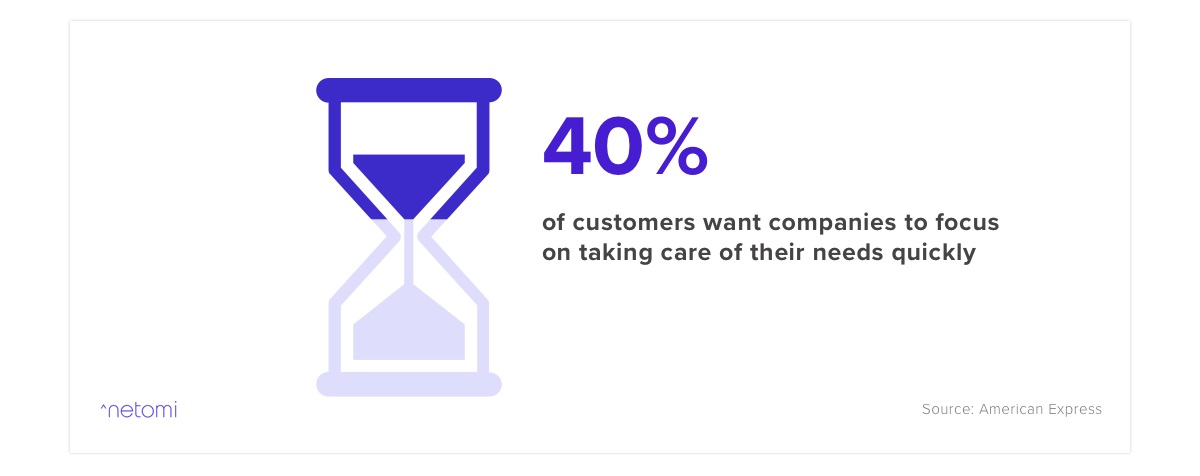
First contact resolution has a simple mathematical formula associated with it. To calculate it, you must divide the number of resolved incidents on first contact by the total number of incidents you handle. Then, you multiply this number by 100 to get the figure.
Of course, this presents another problem—namely, how you know if a problem has actually been solved. You can determine this by considering your customer care strategy, which may involve sending a summary of your conversation with a customer to them shortly after it ends. Invite them to reach out if they have further issues; if they don’t, you can reasonably assume their customer journey has ended for now, and factor it into your calculations.
3. Net promoter score (NPS)
While this metric sounds complicated, it’s actually pretty simple. It refers to the likelihood that a customer will recommend your business to someone else. We can calculate it by asking a customer a simple question: On a scale of 1 to 10, how likely are you to recommend us to someone you know?
Once we have a significantly large number of responses, we can segment them into three categories: 0–6, 7–8, and 9–10. Take the amount in each category, express it as a percentage, and then subtract the 0–6 respondents from the 9–10 respondents.
For example, let’s assume we have ten 0–6 respondents, 18 7–8 respondents, and 72 9–10 respondents. By subtracting the first group from the third group, we end up with a net promoter score of 62. By calculating our net promoter score in this way, we can end up with a maximum score of 100 and a minimum of –100.

It’s a good idea to pair this initial question with some kind of follow-up question—one that asks how you can improve. This is a simple but effective way to boost your score going forward, and more easily identify problems with your customer service.
4. Quality assurance score (QAS)
This metric allows you to compare your agents’ performance with your own definition of quality customer service. To do this you need to put together a scorecard covering all relevant aspects of a customer service call or interaction. For example, you may want to consider tone of voice, quality of explanation, and the processes used to solve a problem.
Once this is done you need to examine an agent’s interactions with customers, and assign a numerical score to each entry on the checklist. The percentage of points that an agent earns is their quality assurance score.
You can approach this scoring in a couple of different ways. You may want your scorecard to contain a list of yes/no questions, with a point awarded for each question your agent can answer “yes” to. If you want something more nuanced you can reward 1–10 points for each question, depending on how well an agent performed.
For instance, let’s imagine your checklist has ten criteria—with up to ten points for each one. If your agent earned 60 points, then 60 is their quality assurance score. A good customer agent will be receiving a quality assurance score of 75–90%.
Quality assurance scores are a particularly helpful metric because they can give you a more accurate picture of an agent’s performance. Seeing what they do first-hand helps you readily identify areas of improvement, in a way that other metrics cannot match.
Make sure to involve your agents in the checklist creation process; this helps you build employee engagement and helps them understand their own performance better. Be prepared to show agents their scores, and let them appeal their score if they feel you’re being unfair. Especially if they don’t yet have the tools needed to keep customers happy.
5. Average handling time (AHT)
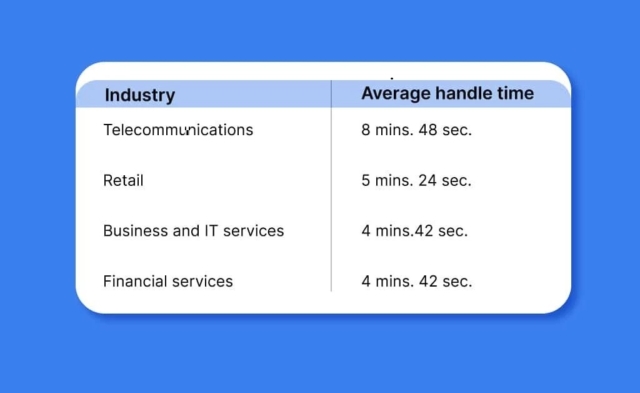
This metric refers to the average length of time a contact centre agent spends with a customer. It covers a few different activities: The total length of a conversation, the length of time a customer is on hold, and how many calls an agent handles within a specific timeframe.
There isn’t really an optimum length of time for any of these metrics, as every contact centre will work differently. However, as a rule you’ll want to minimise your hold time, optimise your talk time, and increase the number of calls handled. You’ll also want to improve (or maintain) customer satisfaction levels as you go.
You can calculate average handling time by adding together talk time, hold time, and time spent on follow-up conversations. Then, you divide this number by the number of calls an agent handles within a given timeframe. You can express average handling time in minutes or seconds, depending on your preference.
It’s important to understand that reducing average handling time can be problematic. This is because a shorter customer call isn’t necessarily a better one. An agent that is rushing through a customer call may be compromising customer service, and customer satisfaction levels (i.e., the most important concern) may drop as a consequence.
Besides obvious measures like training and monitoring agent performance, you can influence average handling time in other ways. You may want to provide agents with more resources to draw upon during calls, such as help articles or a knowledge base. This helps them find relevant answers more quickly.
You may also want to take a look at your call routing mechanisms. If calls are frequently being routed to the wrong agent, this has a detrimental impact on average handling time and customer satisfaction. This could, in turn, lead to agents being penalised unfairly.

It might be more helpful to look at the median handling time rather than the average handling time. This means that, rather than adding handling times together, you lay out individual ones in numerical order and find the one in the middle.
In the picture above, the median handling time would be four minutes. Doing this helps you dismiss outliers, and can offer a more accurate picture of the situation.
How to best manage your contact centre
With this deeper understanding of a contact centre’s functions, it’s time to look at how you deal with its most important element: The people working within it.
1. Effective training experience for agents
It’s important to get new contact centre agents started on the right foot. This is because—rightly or wrongly—contact centres and call centres have a reputation as a stressful work environment. Avoid this particular trap by offering a good experience from the offset—particularly since insufficient training is one of the major causes of stress in contact and call centres.
A key area to prioritise here is the onboarding process. This is where you introduce an employee to a role’s intricacies and the broader company.
Make sure to communicate a businesses’ values and impress the importance of high standards. This helps employees to understand what’s expected of them. Introducing a new hire to all of their team members is also a great move at this point
You may also want to consider which tasks you want to focus on in training—particularly ones that are challenging or uncomfortable. Caller complaints are one thing worth addressing here, especially as in this line of work you can expect to encounter a lot of them.
One way to approach this task is by examining the mindset of the agent dealing with it. Encourage an agent to see a customer complaint as an opportunity to provide good service, instead of an obstacle to be overcome. Thinking carefully about these parts of the job ensures both your employees and customers are happier in the long run.
2. Team calibration and huddles
Once you’ve finished training somebody, your responsibility for them doesn’t stop there. A good manager is continually invested in the wellbeing of their employees, and listens to their questions and concerns.
An employee that doesn’t feel they can discuss their job with you will become stressed and unhappy, with the broader performance of the contact centre paying the price.
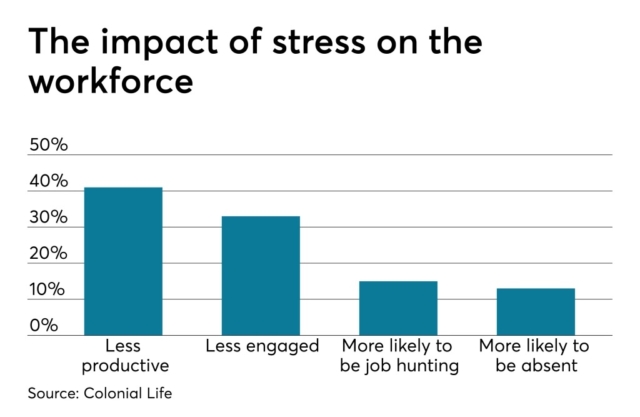
Huddles are a good way to keep everyone happy and working properly. These are meetings held with everyone in a team or department; they can happen daily, or simply on a regular basis if this isn’t practical. Huddles allow you (and your employees) to share business updates, share problems, and understand your broader workflow.
An important aspect of huddles is calibration, which is when the activities of different employees and teams are aligned. To effectively calibrate a team, make sure to tell them how they work together, if there’s anything they need to collaborate on, and if there’s any aspects of their job they need to prioritise. In short, give everyone a clear picture of what they’re supposed to be doing that day.
3. Efficient scheduling
Scheduling is an important part of working in a contact centre—especially since, as we’ve established, this can be a stressful workplace. Proper scheduling helps to reduce stress amongst your workforce, and improve the level of service you offer
Scheduling can be a difficult task for any manager because there are several different factors to consider. Sometimes this is a matter of how many people are working at once: too many will leave employees spinning their wheels, while too few will concentrate work in too small a space. Other factors include changing call volume, employee ability, and employee availability.
As such, it may be a good idea to (where possible) keep your employees abreast of your scheduling process. You may also want to use some kind of specialised scheduling tool to manage the process properly. Our workforce management and optimisation tools can be useful here.
4. Listen to customer feedback
Your customers can often be a solid resource of information when you need to make improvements. As we’ve already established, businesses can now use several different channels to gather information from customers. Contact centres can use this information to refine the way they operate.
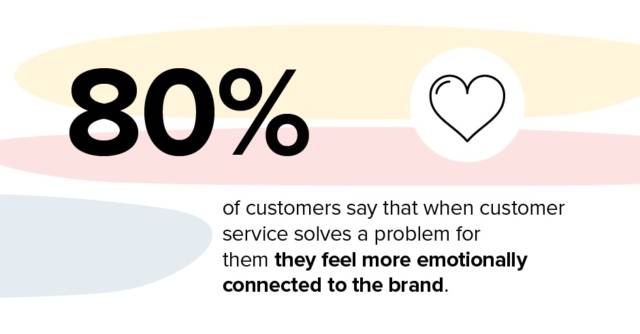
Customers may have any number of complaints about the service you offer, so try to establish broader areas of concern. If a lot of people are complaining about your IVR system, see if it can be refined. If customers feel rushed through phone calls with your agents, try to set less punitive targets when calculating metrics.
As a manager, it can be a good idea to step into the shoes of your employees from time to time. This can help you listen to customers’ concerns first hand, and get a much clearer picture of how you can improve your service. It also shows your employees you can lead by example and get your hands dirty as readily as you ask them to.
5. Tools you can use
Today’s contact centres can use many different forms of technology to work effectively. As a manager, it’s on you to learn about what’s available and what’s useful to your workforce.
Since this is a broad area, it can be tricky to know where to start. Consider focussing on the contact centre software you need to work properly, and if there’s any areas of improvement technology can help you with. You should also consider the price of this software.
In this context, most of the key pieces of technology are used during phone calls with customers. Besides obvious functions like call recording, managers can whisper to (or covertly message) an agent, providing them with a nudge in the right direction. They can even barge a call, or take over from an agent who is struggling.
Other tools can help customers get to the right agent from the offset. Our conversational AI helps you get customers where they ought to be much more quickly.
6. Targeted coaching
Your employee onboarding and training process should give employees the skills they need to do their jobs effectively. Of course, every employee will probably need some help along the way to reach their full potential. This is where targeted coaching comes into play.

Targeted coaching is focussed on a specific employee’s abilities and areas of improvement. This kind of granular approach to employee performance is essential, as it’s likely every employee will need a slightly different kind of feedback.
Engaging in targeted coaching sessions on a regular basis, especially with new hires, helps you get a deeper understanding of their skills and how they’re improving over time.
If you can, it’s good to do this with every employee within a specific team or department. If this isn’t practical, concentrate your efforts on newer employees or ones that are particularly struggling.
7. Proper customer data usage
The interconnected nature of our world means customers expect you to understand their problems, whether an agent has personally dealt with them or not.
Regardless of how a customer contacts you, your agents should be able to bring up the relevant information on them quickly. Make sure to keep customer data in a central location that all your agents can access easily; this helps agents demonstrate professionalism at work.
If your employees are ever engaged in outbound calls, make sure you’re not contacting people who don’t want to be contacted. Resources like the National Do Not Call Registry and the Telephone Preference Service record who don’t want to be contacted by telemarketers. Ignoring this request can incur serious penalties, so make sure to—in all regards—respect customers during your work.
Take your contact centre to the next level with RingCentral
As you can see, running a contact centre properly is a highly complex task. You need to properly understand its capabilities and the costs it’s likely to incur. You also need to make sure you’re properly measuring the impact of your activities, and that you’re taking good care of the employees working within it.
Working with the right software provider here can make all the difference. RingCentral is pleased to offer a raft of contact centre functionality. Our omnichannel routing system lets you intelligently redirect calls based on things like capacity and skill level. Our workforce management solutions help you schedule time more effectively. And our reporting lets you keep an eye on agent performance in real time.
Request a demo today, and see firsthand what RingCentral can do for you.
Originally published Aug 18, 2022, updated Feb 16, 2024

